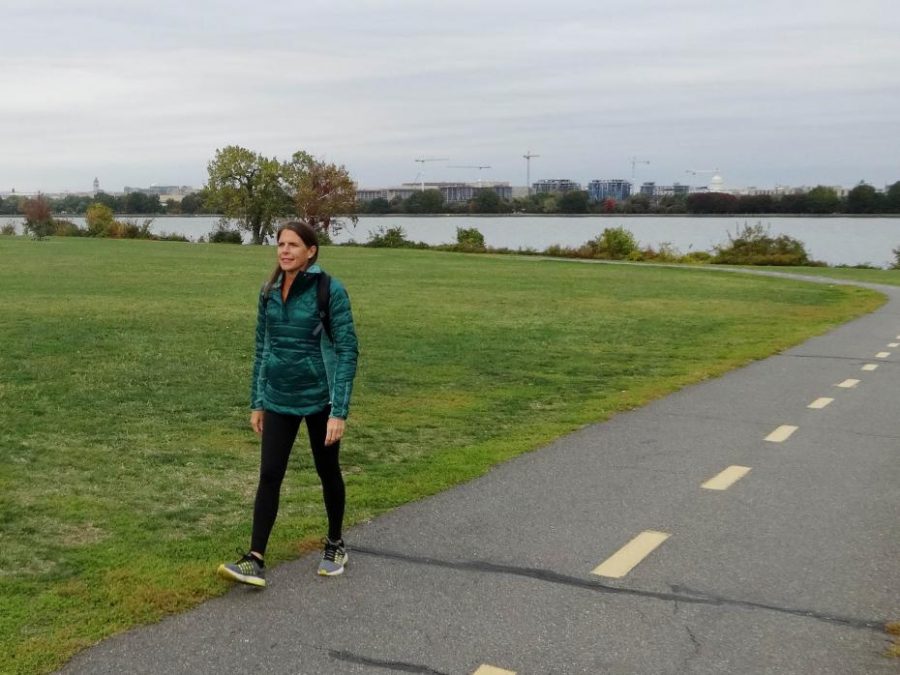As I sat in gridlock on the George Washington Memorial Parkway during my 45-minute morning commute into Washington, I looked out the window. There was a woman my age running along the Mount Vernon Trail. I longed to be outdoors – and vertical.
That moment last fall, when I was 42, marked the beginning of a change in my life that would give me more energy and better fitness.
Like most Americans, my life is sedentary. I sit down to eat. I sit at my desk on days I freelance from home, and I sit at a different desk on days I work as a contractor in the city. I sit when I read at night. I sit at book club, in church on Sundays and when I get together with a friend at a coffeehouse.
Even exercising involves frequent sitting – for instance, on the drive to the tennis courts where, after a match, I climb right back into my car for the ride home. A run rarely takes more than an hour. Half of a yoga class involves seated poses.
“Let’s meet for a walk instead of lunch,” a friend said one day. “I feel like we’re getting sitting disease.”
Yes, sitting disease, a term describing the effects of a lifestyle that makes a person more susceptible to illness and early death. Research shows that regular exercise isn’t enough to reduce these risks if you spend the rest of the day on your buttocks.
Trapped in my car that morning, I tried to breathe calmly, but even as I listened to a podcast on happiness, I was miserable. Washington has some of the worst traffic congestion in the country, and there was no way I could feel anything but tense that day and many others as I watched people engage in the worst of human behaviour: cutting into lanes, yelling curses and making obscene gestures, as if we were all a bunch of toddlers throwing an R-rated temper tantrum.
It was clear: after years of city traffic, I had to escape the constant conga line of cars.
A bike seemed like a good idea. About 4 per cent of Washingtonians bike to work, one of the highest percentages for a major metropolitan city, a 2014 U.S. Census Bureau report found. But it has a huge drawback: sitting. My body was begging to be upright and in motion. The ElliptiGO, a stand-up bike, seemed like the perfect solution until I saw the price: $1,200 for the least expensive model.
Paddleboarding across the Potomac River from Virginia into the city side sounded totally impractical, especially if I were in a mad rush. I also nixed the idea of running because I didn’t want to run while lugging a backpack.
My mom lived in Nashville and had a horrible commute. When she and my dad downsized and moved even farther away from her job, I asked how she planned to handle the situation.
“Retire,” she said.
Getting desperate, I came up with a creative idea: rollerblading. It was great. I felt free and overcome with joy at so much fresh air. But all that ended one night last winter when I crash-landed at the bottom of the hill by the 14th Street Bridge. As I plucked dead leaves out of my hair, a woman ambled by, and that’s when it hit me: I’d walk.
No special equipment necessary, just my two feet.
Because I’m not a morning person, I decided to Metro in to work (45 minutes door to door) and walk back. My home in Alexandria, Virginia, isn’t exactly close to my work, but it’s not insanely far, either: 7.2 miles on sidewalks or paths that take me past the Sculpture Garden at the National Gallery of Art, the Washington Monument and the cherry trees near the Jefferson Memorial until I reach the walkway that leads to the Mount Vernon Trail. The route is well-lit in the city, and I wear a headlamp for the trail’s dark sections.
How often I work in the city varies, but when I’m there, I pack yoga pants, layered tops, a sports bra and my Nike Air Zooms and change out of my business attire in the bathroom at the end of the day. (Walking with a backpack doesn’t bother me the way running with one does.)
Source: The Independent
November 14, 2016
By Jenny Rough
http://www.independent.co.uk/life-style/health-and-families/take-a-seat-no-walking-is-a-smarter-idea-a7416236.html











